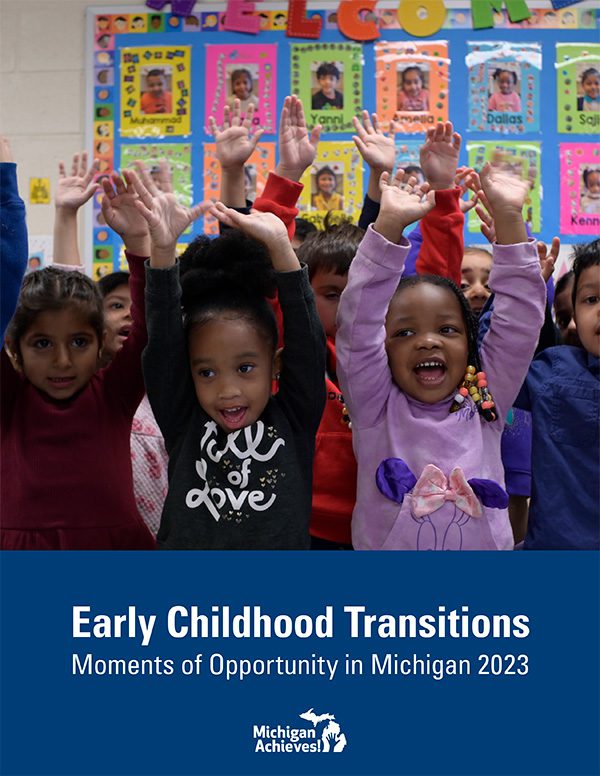Moments of Opportunity in Michigan
Children from low-income backgrounds often face early and persistent challenges to educational success.1
By the age of three, children who grow up in poverty hear 30 million fewer words than their more economically advantaged peers,2 a disparity which contributes to later differences in reading skills.
Children of color also face early and persistent challenges to attaining educational success. Consider that Black and Latino children are more than twice as likely to live in poverty as their White and Asian counterparts.3 In Michigan, 47% of Black children and 23% of Latino children live in high-poverty areas, compared to 5% of White children.4
Despite profound benefits, early childhood education in Michigan and across the nation lacks sufficient funding.
In this report, The Education Trust-Midwest brings its equity lens and extensive work in K-12 data and teacher effectiveness to spotlight the preschool through third grade (P-3) period of that continuum, emphasizing alignment within the data and workforce development foundational elements.
The report details the importance and critical features of a robust data infrastructure and practices, as well as current challenges and potential leverage points for cultivating a strong early childhood education workforce to support that transition phase. We focus on investment in key levers within the foundational five elements that could support stronger alignment between Michigan’s early childhood education system and K-12 system, with a focus on connecting strategies between preschool and third grade.
THE FOUNDATIONAL FIVE ELEMENTS OF EARLY CHILDHOOD EDUCATION
To provide every student with an equitable opportunity to reach their full potential, leaders and policymakers should focus on five foundational elements to fortify the early childhood education system and facilitate students’ successful transitions from preschool into kindergarten and beyond:
- Quality
- Access and Affordability
- Funding Structure Improvement
- Data
- Workforce Recruitment, Compensation, and Retention Strategies
The coordination of policies and programs across all five foundational elements, rather than a narrow focus on any single element, will foster progress and long-term benefits for historically underserved students. Together, these foundational five elements provide the critical support that is needed to foster students’ seamless transitions from early childhood education system to elementary school.

1 Garcia, E. & Weiss, E. (2017). Education inequalities at the school starting gate: Gaps, trends, and strategies to address them. Economic Policy Institute. https://www.epi.org/publication/education-inequalities-at-the-school-starting-gate/
2 Colker, L.J. (2014). The word gap: The early years make the difference. Teach¬ing Young Children, 7(3). https://www.naeyc.org/resources/pubs/tyc/feb2014/the-word-gap
3 The Annie E. Casey Foundation. (2021). 2021 Kids count data book: State trends in child well-being. https://assets.aecf.org/m/resourcedoc/aecf-2021kidscountdatabook-2021.pdf
4 Perdue, K. (2021). 2021 Kids Count in Michigan: A Better Future Is Possible. Michigan League for Public Policy. https://mlpp.org/2021-kids-count-michigan-data-book/
